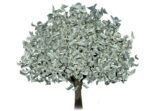The text and analysis are designed to replicate the style of the reports that the firm’s 130 analysts produce, and will help provide the rationale and justification for the quantitative ratings individual mutual funds and ETFs are assigned, according to a statement by Morningstar.
Since 2011, Morningstar has published a forward-looking analyst rating supported by analyst-written content to give investors a better understanding of why the firm believes a fund is worth investing in (or not) over the long haul.
Two years ago, it introduced the Morningstar quantitative rating (MQR) in the UK to expand the number of funds that receive coverage, using a machine-learning model that is meant to mimic how the firm’s analysts would rate a fund. Morningstar back-tested 15 years of data before launching the MQR system, and fund performance and ratings have subsequently aligned, according to the firm.
Now, Morningstar is going a step further.
It is supplementing its quantitative ratings with text and analysis that is automatically generated, but which is meant to replicate the way human analysts write their reports.
“MQR analysis generates opinion-based text, not automated text,” a spokeswoman told FSA.
For example, rather than: “the fund earns an above-average people rating because of its 95% retention ratio and carries an average six years of experience on the fund” – which might seem a bit grey and anonymous – the algorithm might come up with the more informal: “the fund earns high marks for its ability to retain managers coupled with an experienced team”.
At the end of last year, Morningstar provided analyst ratings written by humans for around 3,330 mutual funds and 520 ETFs; MQR analysis generated by algorithms will cover an additional 34,000 mutual funds and 4,000 ETFs, according to Morningstar data.
“Our analysts focus on investment merit and client demand [to determine which they cover personally]. Although these criteria tilt coverage toward larger strategies, analysts will cover new and/or small strategies if they have merit,” the spokeswoman said.
The framework is style agnostic: for instance, among equity strategies, there is no preference for value, growth or momentum, and for fixed-income strategies, both high-quality and credit-sensitive styles are considered viable.
“The MQR is steeped in the roots of our analyst framework, which assesses three core pillars of a fund: people, process, and parent,” according to Morningstar.
Its highest ratings are gold, silver and bronze, and its lower ratings are neutral and negative.
The analyst rating is distinct from its “star rating”, which ranges from one star to top-rated five stars. Where the star rating is a backwards-looking view of after-fee risk-adjusted performance, the MQR is an assessment of a fund’s ability to outperform peers in the future.

















